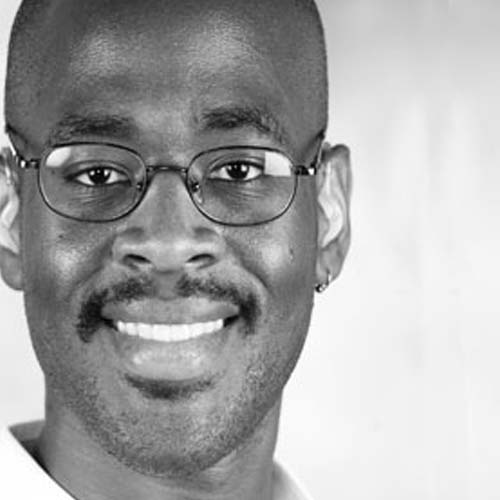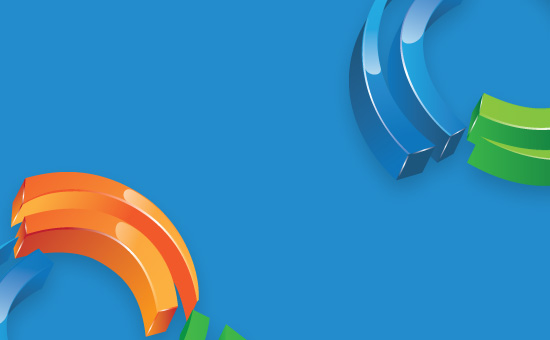Sign Language Interpreters: Practicing with a Socially Conscious Approach
Joseph Hill presented Sign Language Interpreters: Practicing with a Socially Conscious Approach at StreetLeverage – Live 2015 | Boston. His presentation explores the importance of reflective practice as a means of examining one’s perspective on language ideology, social injustice, and the development of a socially conscious approach to interpreting.
You can find the PPT deck for his presentation here.
[Note from StreetLeverage: What follows is an English version of Joseph’s presentation from StreetLeverage – Live 2015 | Boston. We would encourage each of you to watch the video and access Joseph’s presentation directly.]
Sign Language Interpreters: Practicing with a Socially Conscious Approach
This talk can apply to all social issues that we have been dealing with in our lives and we need to keep in mind that these issues are always interconnected. We all have more than just one identity. Our identities tie to the systems that can either benefit or hurt us depending on our social positions in our community during a given period, the circumstances of our birth, and the choices we make. Unfortunately, due to the limited time for this talk, I’ve chosen to focus on a single issue that is relevant to me as a black deaf person so I can give you some specific examples that I have seen, that I have read, and that I have heard. This issue is something that we are all familiar with: racism. Now this makes you wake up this morning so you can pay attention to this topic. Racism is still a sensitive social issue for many people, but for marginalized people, the issue is more than just sensitive. It is a barrier. It is a social poison. It is a life and death issue. Typically, when we think of racism, we think about how it negatively affects people of color, but we rarely think about how it also affects white people and their relationships with people of color.
Journey of Black ASL Research
About eight years ago, I was in a fortunate position to be involved in a sociolinguistic project that focused on the sign language variety of African-American deaf signers that we called “Black ASL.” Dr. Ceil Lucas, who is a leading researcher in sociolinguistics of sign languages in deaf communities, Dr. Carolyn McCaskill, and Dr. Robert Bayley asked me to be part of the team. I was a doctoral student at the time, so of course I was eager to be part of it. There weren’t many opportunities like this one. Before this, there were a very small number of studies on the language and communication of black deaf signers, so this project could make a great impact.
For the next couple years, we traveled to six Southern states and collected data from black deaf participants. We picked the South because of the history of segregation that was part of the public institutions, that influenced the social networks, and prevented language contact between white and black deaf children at schools. We could just focus on the interesting linguistic features of Black ASL, but we could not ignore the history of Black ASL because whatever happened in the history still has an effect today on those who have lived through segregation. We also focused on younger black deaf signers who were generations removed from the state-sanctioned segregation and their educational context was different compared to the educational context before the segregation, but still, the distinctive linguistic differences could be found in their signing.
After finishing our data analysis, we traveled to different venues to give the presentations on the findings of Black ASL. Our project was written up in The Washington Post. We published our work so the public could learn more about it. We were involved in a Q & A online chat session on the Washington Post. There were positive comments but there were negative comments as well. For example, one negative comment said that people always see race in everything. Another example of the negative comment was this, “You mean the color of your skin affects how you communicate?” My answer was no, it wasn’t what we meant. It was the situational context that influenced how you communicated based on how you were perceived.
Anyway, we started going to different places and giving our presentation on Black ASL. The black deaf community members appreciated our effort to shine the spotlight on their language variety and had their stories told in our book and on the DVD. This kind of validation was rare for them. The deaf community, in general, enjoyed learning about this as well because it was rarely told to them. The audience of hearing people who knew least about sign language were pleasantly surprised about the fact that there were more than one variety of sign language. And of course, sign language interpreters loved to learn about anything related to sign language. Following the presentations, there were questions that kept coming up:
- Where can I take a class on Black ASL?
- Where can I buy a dictionary of Black ASL?
- Should I use Black English when I interpret for my black deaf clients?
- How can I apply it to my work?
I have been getting these questions for about four years now and for some reason, I feel uneasy with these questions. They seem innocuous enough, but in the past year when I started thinking deeply about the underlying social issues, I began to see the significance of these questions. They are based on the assumption that this information is widely available in academic settings which are far removed from the social contexts. They are based on the audience’s lack of relationships with the black deaf community who use the language in the specific social contexts. This is part of the general trend where more people can learn about ASL without being involved in the deaf community. The operative word is “general” because if something negative happens to the deaf community in general, it is usually the worst for the members with marginalized identities.
Number Matters
I want you to visualize how marginalized some social groups are. As you can see from the numbers on the RID member demographics, we have about 95% of RID members who are female, so the interpreter profession is female-dominant. If we look at race, we have 87% of RID members who are white. That leaves 13% who are RID members of color. Almost 5% of them are African American/Black (RID Views, Winter 2014). We have about 320 million people living in United States and 12% of them are African American/Black (38 million); 17% of them are Hispanics (54 million); 5% are Asian (18 million). You can see the discrepancy with the numbers. Let’s think about the number of African American/Black deaf and hard of hearing consumers. Out of 20 million deaf and hard of hearing people, 1.2 million of them are Black and they see white interpreters more often than they see black interpreters. Let’s think about the number of black deaf people who graduated with Ph.D degrees. The number is 13 and I am one of the recent ones in 2011. Two years ago, two of the thirteen passed away. The number gets smaller. Going back to what I said about prior research studies on Black ASL, which were few, if we wait for someone like me and Dr. Carolyn McCaskill (who might retire someday) to publish more on Black ASL, our research output will not be a lot. That is related to the system that doesn’t allow for people of color to produce necessary work. I am talking about the system in America.
To see how widespread the problem of underrepresentation is for people of color, let’s think about the number of children’s books that contain characters of color. It was based on a report in 2012 that covered 3,600 books. Around 93% of the books were about white characters and 3% were about black characters, and 4% included Latinos, Native Americans, and Asian Pacific Americans. Why do these numbers matter? Let me give you an example to show why they matter.
In “Dark Girls” which is a documentary released in 2011, there was one particular scene that was heartbreaking. It showed a young black girl, around the age of 5, sitting with a psychologist. Between them was a picture of 5 children who looked and dressed the same except for the skin color. From left to right, the shade of the skin color went from light to dark. Each time the psychologist told the girl to point out which child was smart, which child was beautiful, which child was good, the girl always pointed to the one with the lightest skin color. Each time the psychologist told the girl to point out which child was dumb, ugly, and bad, she always pointed to the one with the darkest skin color. This girl, who was raised with a black family, somehow internalized the negative messages about people with dark skin. We could say that the girl was exposed to the explicit messages about black people, but these days, some people are very good with being careful about what to say so the messages are not always explicit. But the girl could pick up on the implicit messages. How many children’s books have black characters? How many magazines feature black models on the covers? How many TV programs have black characters that she could relate to? Did her white friends have other black friends? How did people interact with her and a white child? What did people assume about her before they talked with her? If she noticed the large number of white people anywhere she went and they received positive treatment, she would interpret “whiteness” as the norm and she would assign positive attributes to it. Anything opposite that she would interpret it as negative.
Now let’s think about white children who were exposed to the same implicit messages and they had fewer or no black friends. Imagine that they grew up the same way and became the interpreters as you see on the 2014 RID member demographics. Now these same interpreters work with deaf and hard of hearing people of color. I want to show you the perspective of a black deaf consumer on this issue.
Video: “As a black deaf woman, I feel oppressed by the system. When I was growing up, I noticed how people looked at me, expressed doubts about me, asked me what I was doing here and telling me to get away. I noticed them and felt confused. But I went and lived as I was living. But then when I got older, I realized that it was the system and it was so powerful. The system is too big to challenge. It makes me afraid for myself. My other concern is related to interpreters. For example, when I made my doctor’s appointment, I requested a specific interpreter. I wanted a black interpreter. The office looked for one and found none. So I went ahead and accepted an interpreter who was not a person of color. I felt like I had to erase my language identity, my cultural identity. It was not effective for me with the interpreter. There was a lot of misunderstandings. So we ended up rescheduling the appointment. I did not feel good about that. During that encounter, I felt uncomfortable. I didn’t want to look like I wasn’t smart. I had to work harder so I could appear to have better language. It didn’t feel right to me. Within the deaf community, it is pretty diverse. In the interpreter community, there are more members but the problem is that it is not diverse enough with people of color, people with disabilities, and other identities. If both communities reflect each other in terms of diversity, it will be much better.”
Obviously, we want to do something about that. We want to change the way we work. We want to expand our vocabulary and linguistic knowledge to match our consumers. We want to learn more strategies to be able to interpret better. We want to be culturally competent in order to serve our consumers. But those things are the tip of the iceberg. They are about work. We want to address our views of the world that shape our interactions. I want to tell you a story about a couple who chose to live on the farm so they could grow their own food organically. They wanted to live and eat healthy. So they grew vegetables and handled their animals. Over time, they became sicker and sicker. They were not sure what caused them to get sick. Eventually, they found out that the soil was contaminated with toxic waste left by a company long ago and it was never reported. The toxic waste contaminated everything that was raised on the soil, including the food that the couple grew organically. Metaphorically, the soil is the systems we are in and the toxic waste is racism that was left by a powerful group of people who profited from it. We have to do something about our soil before we can plant our seeds.
Roots of Social Consciousness
Social consciousness means we need to be aware of the social discrepancies and recognize them. But we don’t always recognize them in the same way. For example, we can have an acquired social consciousness which means that we follow the system as it is. We won’t be involved in a situation that involves a problem. We contribute to oppression. Next, we have an awakened social consciousness which means we recognize the problem and we can’t ignore it. We fight with the system. We focus something outside of ourselves, rather than looking within us. Another one is an expanded social consciousness which requires us to be aware of our roles in the system, the actions we need to take to change, and the strategies to change. We will discuss more about them later in the workshop.
I have one example for you to think about. A black interpreter has a mentor who is white. The interpreter is assigned with a white deaf consumer but the consumer makes racist remarks against the interpreter and it throws the interpreter off. After the assignment, the interpreter shares with the mentor about her experience. What does the mentor do in this situation? The mentor says, “you just have to deal with it. It is part of the job.” My question for you, is that right? Is that appropriate? Why would the mentor say that? This is why we need to talk about this because we don’t have to accept this.
Comfortable being uncomfortable
Clearly, we have to talk about it. If we try to push it down, it will be toxic for us, like the metaphor I shared with you. We have to unpack. We have to be open. When we are willing to become vulnerable, we will recognize our place in the system. We can’t deny it and say that this is not our problem. We are part of the problem. We have to get involved in the discussion, engage in a dialogue. Dialogue is not just a form of talking. We exchange our ideas through communication to help ourselves in understanding each other’s perspective and recognizing the stories. We don’t cast doubt on someone’s story and push it down. We should be open and recognize someone’s lived experience. Conversation will lead to change.













